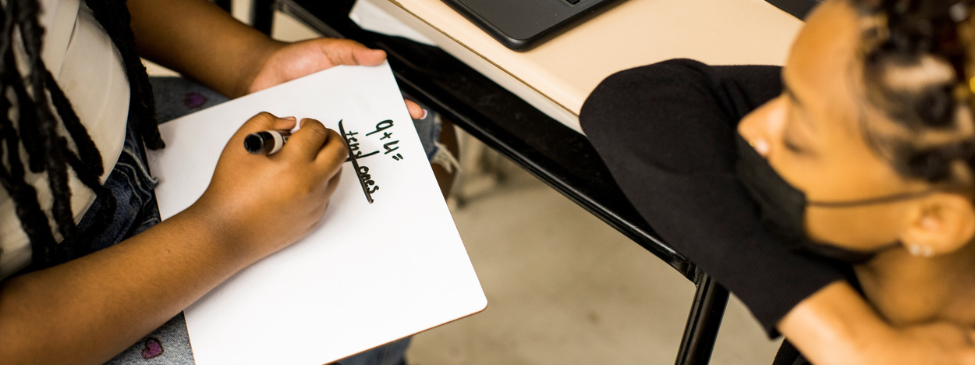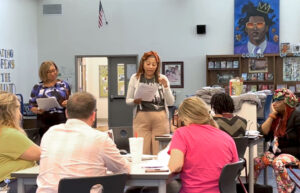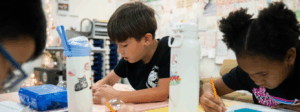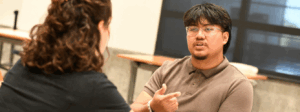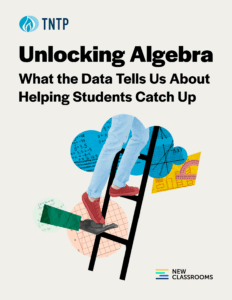With math proficiency dropping to an all-time low due to nationwide learning disruptions, the start of a new school year is a pivotal time to transform teaching and learning. Fully recovering from the COVID-19 pandemic and the countless instructional hurdles educators and students faced well before COVID requires that the education ecosystem of policymakers, leaders, and educators willingly engage in a redesign of core instruction and student wraparound supports.
Simply doing something different during core instruction or intervention is not enough if those “difference-making” practices do not anchor to instructional coherence, students’ collective and individual needs, and other evidence-based practices that maximize the student experience and accelerate learning and recovery. When redesigned correctly, systems that align every element of its instructional program and its strategies from core instruction to student supports and interventions with extended instructional time, give students the best chance to catch up with their peers.
TNTP’s Good to Great is a professional learning experience grounded in instructional coherence and change management that puts students at the center of learning and results in teachers and students developing new identities as learners. The program jumpstarts instructional improvement and challenges low expectations, creating opportunities for teachers to try new things and see an immediate impact with students. Because everyone in a school must be on board in true collaboration for coherence models to work, both teachers and administrators learn the strategies and key elements of strong instruction in each subject area together.
We sat down with Bonifacio Sanchez, principal, and Melisa Gemetti, a teacher who is now an instructional coach, at Williams Elementary in the Fresno Unified School District, to discuss how the Good to Great experience has changed the way they learn, lead, and teach using an instructional coherence model and how our partnership ultimately led to students having a new-found “math identity.”
This interview has been edited for length and clarity.
Q: Would you tell us about your community at Williams Elementary and how you came to participate in Good to Great?
Bonifacio Sanchez, principal: Williams Elementary is in the Fresno Unified School District and our students are 80 percent or more socio-economically disadvantaged. We’ve had a historical underperformance in math, and it created a sense of urgency to figure out how we could help our students. There were a couple of professional learning opportunities available and one of them was the Good to Great educator development model. I heard positive things about Good to Great and I wanted to try it. The approach hooked me right from the beginning. The minute we started, I realized that this was about understanding math, conceptual thinking, and putting students at the center—I was sold.
Q: How would you describe the Good to Great experience?
Bonifacio Sanchez, principal: Good to Great is a professional learning opportunity for all stakeholders—teachers, administrators, and instructional coaches. I was learning along with my teachers—what the standards were asking for, what the rigor looked like, what the math models were.
A critical element is that we looked at the math progressions to understand how the grades are connected from kindergarten to fifth grade and identified the key components that each grade level is responsible for as the building blocks for the next grade level. Once you understand this progression of learning, you can help students who aren’t on grade level because you know what’s next in the progression. I heard of coherence building many times and I thought I understood that concept. By looking at the coherence map, you can see how all the skills are linked through prerequisite skills and standards that spiral through the different grades, but it never truly made sense to me until I started working with TNTP on Good to Great. It was then that I began to see how the math progressions were an example of coherence building.
Q: How has Good to Great impacted student math achievement?
Bonifacio Sanchez, principal: Prior to the pandemic in winter 2019, our district benchmark was at 15 percent math proficiency for kinder through sixth grade. Since the Good to Great learning, we’ve seen improvements. In the last district benchmark that we took in spring 2023, our students achieved 20 percent in math proficiency for kinder through sixth grade. Although it’s a small climb, it’s based on the work we are doing. We don’t want to see sudden spikes because those can be false positives. We’d rather see slow, gradual improvements, which are a more natural product of our work. It will take time to see the growth when it comes to the data.
What gives me the biggest pleasure is when we conduct classroom observations and witness student behaviors. Classroom observations are key to identifying growth from Good to Great. Our students now understand the process that’s going to be used when it comes to approaching the math task. They automatically go into identifying what the problem is about, what the values are, and assess what information they need to find a solution.
Q: What’s been the student reaction to the new way they are learning?
Melisa Gemetti, instructional coach: The methods and strategies behind Good to Great benefit everyone, but I’ve seen the biggest gains for students. They don’t necessarily know that they are learning math in a new way, but this learning has influenced just how much they value their new math identity. When I was teaching sixth grade last year, it was the first school year post-pandemic. The students were still referring to the numerator as the ‘top number.’ This process not only developed their critical thinking skills and analysis of student work, but it also developed the way that the students learned to talk about math. They were speaking in academic vocabulary that couldn’t be reproduced just by flipping the pages of a textbook. They were really trying to help each other make sense of the problem, and to do that, they had to use the right language so that other students could understand. The biggest success in all of this is seeing the progression of student academic discourse from start to finish and how they learned to talk about math and how it changes their math identity. Of the 26 sixth graders that I had last year, about 15 of them are in Gifted and Talented Education classes in math this year which blew me away because that’s not something that’s indicative of the community that we are currently serving. They are thriving.
Q: As an administrator, how has Good to Great changed your perspective on leadership for your teachers?
Bonifacio Sanchez, principal: Working with other schools that have also taken the Good to Great experience has allowed us to create professional learning communities where teachers exchange ideas, which has led them to take on leadership roles and creates a path for this work to continue to live in our school community. Some of the teachers became instructional coaches within our district because of the Good to Great program, like Melisa. These teachers led the work, led the planning, and worked with our TNTP facilitators. Engaging the teachers as instructional coaches created buy-in, ownership and best of all, they were invested in the work.
Q: Overall, what has Good to Great helped you, your teachers, and your students to achieve?
Melisa Gemetti, instructional coach: When I first started Good to Great, it helped me to understand what students come to the table with and how they feel when they don’t understand something because that’s how I felt when I first started going through this program. I became a more confident and empathetic teacher. That confidence I developed bled through to the students and their confidence developed as well. If you can take one thing from Good to Great—it’s building teachers’ and students’ confidence levels; that’s the biggest achievement that we can hope for.
Bonifacio Sanchez, principal: Good to Great has helped us to understand that first, we must be learners of mathematics and learners of different approaches—there isn’t only one right way to do math. There are different ways to represent conceptual thinking. It’s not about the right answer—it’s about the thinking and the process that gets us there. Validating that in our students has taken us away from that traditional approach of ‘this is how you do it. This is the right way of doing it. Watch how I do it and this is how you do it.’ That was taking away all the student creativity and autonomy, but once we started to teach math conceptually, and allow students to express their thinking and have dialogue, you began to see how rich the instruction in the classroom can be just by being a facilitator and allowing this conversation to happen.
Interested in learning more, or want to bring Good to Great to your school or system? Contact us.
